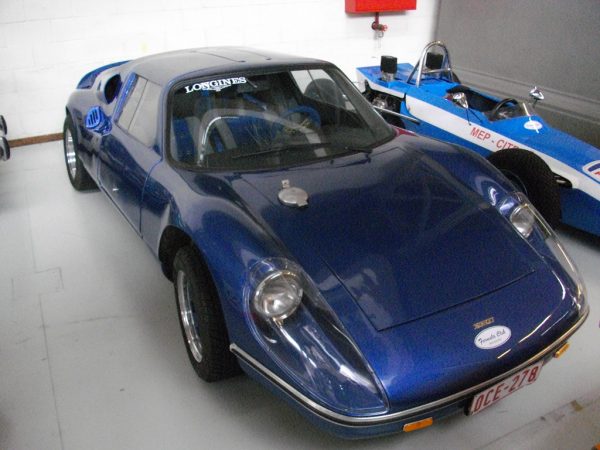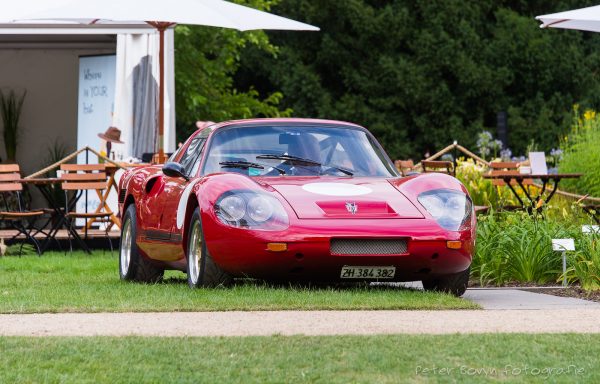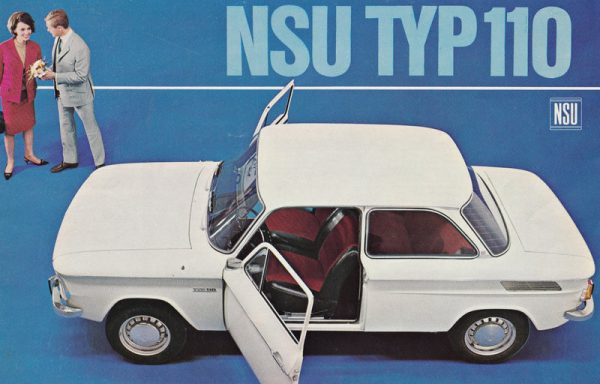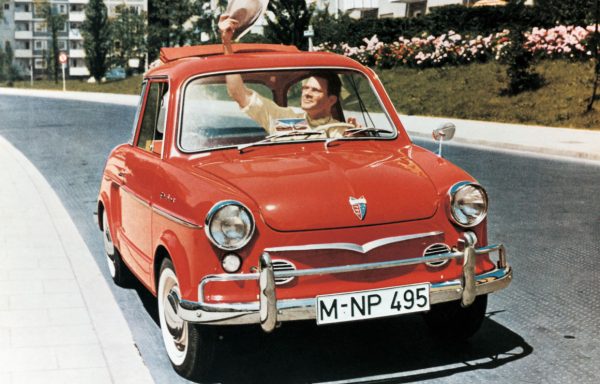NSU Scirocco
A Blend of Sportiness and Practicality
The NSU Scirocco, introduced in 1971, was a remarkable compact coupe that showcased NSU’s ability to blend sporty design with everyday practicality. Named after the warm Mediterranean wind, the Scirocco embodied a sense of performance and style that resonated with car enthusiasts and casual drivers alike, establishing itself as a standout model in the automotive landscape of the 1970s.
The NSU Scirocco was an innovative concept car developed by Italian car designer Franco Scaglione in the early 1960s. Built on an NSU chassis and powered by an NSU engine, the Scirocco showcased futuristic styling and cutting-edge aerodynamics that aimed to explore the potential of high-speed travel. With its lightweight construction, streamlined design, and distinct, aircraft-inspired aesthetic, the Scirocco was a significant concept in NSU’s exploration of advanced design and engineering.
Historical Background
Franco Scaglione, known for his expertise in aerodynamic vehicle design, developed the NSU Scirocco as a personal project in 1964. Built on the NSU Sport Prinz chassis, the Scirocco was equipped with NSU’s air-cooled inline-four engine. It made its debut as a prototype, aiming to demonstrate the possibilities of highly aerodynamic shapes for cars, inspired by the increasing speeds and technological advancements of the time. The car never went into production, but it left a lasting impression as an advanced concept that combined Scaglione’s artistry with NSU’s mechanical reliability.
Technical Specifications
The NSU Scirocco was engineered for efficient high-speed travel, featuring a low-powered yet capable engine and aerodynamic bodywork. Here are the key specifications:
- Displacement: 996 cc
- Compression Ratio: Approximately 9.2:1
- HP Output: Around 54 hp at 5,500 rpm
- Torque Output: Approximately 7.6 kg/m at 4,000 rpm
- Transmission: 4-speed manual
- Length: 3,800 mm
- Width: 1,550 mm
- Height: 1,080 mm
- Weight: Approximately 630 kg
- Wheelbase: 2,200 mm
- 0-100 km/h: Estimated 14 seconds
- Top Speed: Around 160 km/h
Design and Mechanical Features
The NSU Scirocco was designed to be an aerodynamically efficient vehicle that prioritized airflow management and reduced drag.
- Streamlined, Aerodynamic Body:
- Scaglione’s design focused on minimizing drag, featuring a teardrop shape that enhanced the car’s aerodynamic profile. The roofline tapered sharply towards the rear, while the front-end was kept low, contributing to smooth airflow over the vehicle.
- The sleek, aerodynamic shape was influenced by aircraft design, which Scaglione had previously worked with, making the Scirocco stand out as a bold and futuristic design concept.
- Fiberglass Construction:
- The Scirocco utilized a lightweight fiberglass body, which kept the vehicle’s weight low and contributed to improved performance and fuel efficiency.
- This construction allowed for the unique shapes and curves that defined the car’s styling, emphasizing both form and function.
- Air-Cooled Inline-Four Engine:
- The car was powered by NSU’s 996 cc air-cooled inline-four engine, which, while not exceptionally powerful, was capable of delivering a smooth driving experience.
- Its modest power output was balanced by the car’s lightweight body and aerodynamic efficiency, allowing for respectable speed and acceleration.
- Independent Suspension:
- Front Suspension: The Scirocco was fitted with an independent front suspension setup, featuring coil springs and wishbones, providing stable handling.
- Rear Suspension: The rear suspension used a swing axle, which maintained stability at higher speeds while being economical for the lightweight design.
- Interior Layout:
- The Scirocco’s interior was kept simple and functional, with a driver-focused cockpit that provided the essentials for controlling the car. The dashboard featured minimal gauges, with basic indicators for speed, engine temperature, and fuel.
- Bucket seats emphasized comfort and stability for the driver and passenger, ensuring a snug fit in keeping with the vehicle’s sporty aspirations.
- Braking System:
- The braking system was comprised of drum brakes on all four wheels, a standard setup for vehicles of this class at the time. While not particularly advanced, the brakes were adequate for the car’s lightweight construction and moderate power.
Driving Experience and Performance
Though designed as a concept car, the NSU Scirocco aimed to deliver an enjoyable driving experience centered around high-speed stability and aerodynamics. The streamlined shape allowed the car to achieve higher speeds more efficiently than most contemporaries with similar power outputs. The handling was described as stable, particularly on highways, where the aerodynamic design reduced wind resistance and maintained a steady flow over the vehicle.
The car’s light weight made it easy to maneuver, and while it lacked the high-speed acceleration of more powerful sports cars, the Scirocco provided an engaging driving experience suited to its intended purpose as a high-efficiency vehicle.
Legacy and Impact
The NSU Scirocco is remembered as a design experiment that showcased the potential of aerodynamics in automobile design. Though only one prototype was built, the Scirocco had a lasting influence on the automotive world, foreshadowing design elements that would become popular in later sports cars. Its sleek profile, lightweight construction, and minimalistic interior continue to inspire designers and collectors, and it remains an iconic example of Franco Scaglione’s work and NSU’s experimental spirit.
Today, the NSU Scirocco is celebrated as a piece of automotive history that embodied forward-thinking design. Although it never saw production, its principles of aerodynamic efficiency, lightweight materials, and aesthetic innovation influenced the sports car designs that emerged in the following decades. The car’s unique styling and advanced design concept make it a prized collector’s item and a symbol of NSU’s willingness to push the boundaries of conventional automobile design.




